In last post of this series we learnt how to configure a backup verification job and test wether or not a taken backup is restoreable. In this post we will learn how to configure data backup replication so that in case of disaster, if source site is completely down,even then data can be restored from secondary location.
If you accidently landed on this post and have missed earlier post of this series, you can read them from below links:
1: Introduction to vSphere Data Protection
2: Installing & Configuring vSphere Data Protection
3: Backup And Restore VM’s using VDP
4: Configure a Backup Verification job
Lets get started with some theoretical concepts about replication before jumping into lab and actually configuring and testing it.
About VDP Replication
Replication enables you to avoid data loss if the source VDP appliance fails because copies of the backups are available on the destination target. Replication jobs determine which backups are replicated, and when and to where the backups are replicated.
With scheduled or adhoc replication jobs for clients that have no restore points, only the client is replicated on the destination server. Backups created with VDP 6.0 or later can be replicated to another VDP appliance, to an EMC Avamar server, or to a Data Domain system.
Important: VDP only replicates those backups which are completed and marked successful. So to ensure that the greatest number of client backups replicate during replication window, schedule the replication job when there is low or no backup activity.
When a replication job starts, it can process only quiescent, static data that resides on the source server. Therefore, any operation that writes data to the source server and has not fully completed, will not be part of that replication job. The data will, however, be replicated during the next replication operation.
Multiple replication jobs, which are part of a single job, for different VMs run do not parallely run. To change this behavior, add the com.vmware.vdp.option.replicate.maxtreams property to the /usr/local/vdr/etc/vdp-options.properties file.
Some Best Practices for Replication
- If you change the user ID or password for the root account on the replication target server, you must update the destination user ID and password on the source server with the new password.
- You cannot run simultaneous replication and/or recovery of multiple clients if simultaneous, multiple backup and/or restore operations are running.
- Though replication between servers of different versions is supported, ensure that the VDP version on the destination server is either the same or later than the VDP version on the source server.
- While creating the replication job policy, optimize the size of the replication group so that all the clients successfully replicate during each scheduled replication operation. If the group size is very large, replication takes more time to complete. So, split the group into two smaller groups that you canindependently schedule.
How to Configure Replication
To configure backup replication, login to web client and navigate to vSphere Data protection>> Replication >> Replication job actions > New

Select Guest Images/Application backups and hit Next.
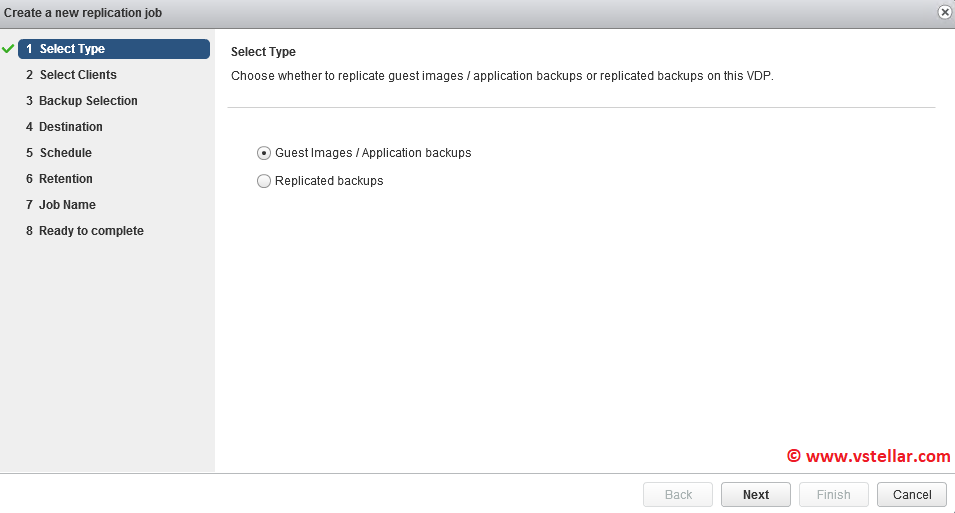
Select all client or individual clients. Replication job will replicate only completed backup for the selected clients. If you choose Select clients individually, you can select one or more clients. If preferred, you can filter the clients before you make any selections
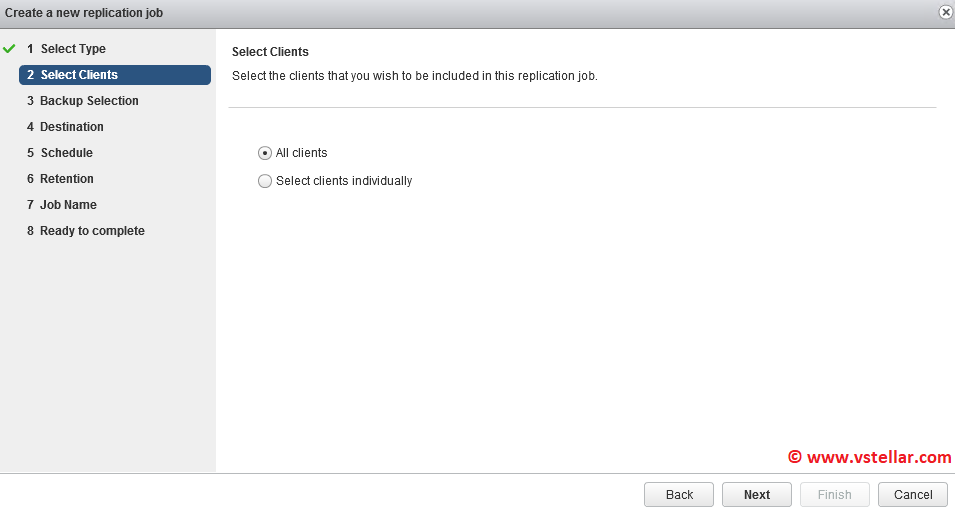
Select which type of backup you want to replicate. Also you can define how many last backups of a given virtual machine will be replicated to destination. There are 2 options available:
No Limit: When this option is selected, all existing backups for a client that meet the Backup Type criteria will be replicated. The number of backups is unlimited.
Number of Backups: When this option is selected, the backups to be replicated are based on chronological order. The most recent backup is selected, regardless of whether it is an on-demand backup or a scheduled backup. The maximum number of backups is 999.
You can also specify the date restrictions which have 3 options available:
None: All backups that meet the Backup Type and Maximum backups to replicate per client criteria will be replicated. There are no other restrictions.
Last: Select a number and a time unit. This option restricts the selection of backups by including only those backups that were created during the specified number of days, weeks, months, or years.
By Range: Select a From date and time, and select a From and To date.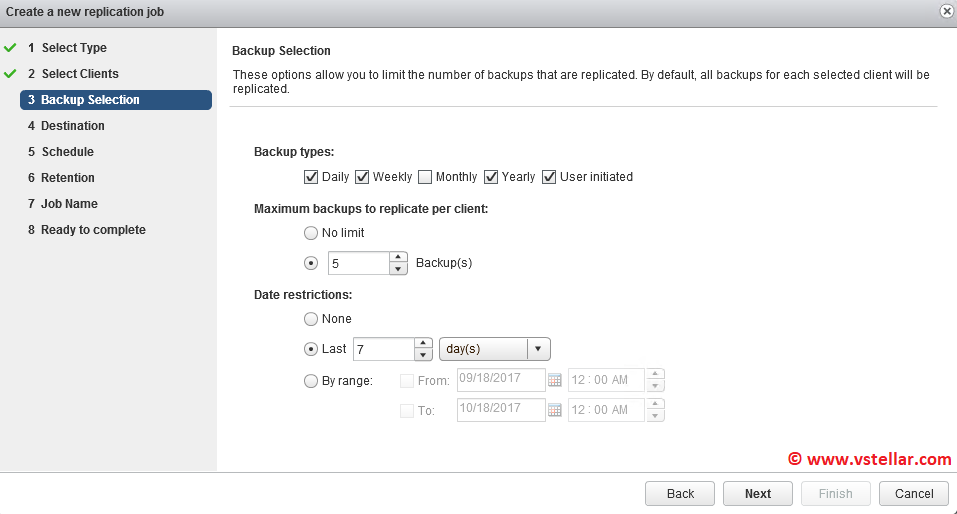
On destination page, provide details of destination vdp server and use the username as “repluser”. If you are wondering what is password of this user, then the answer is “credentials of the repluser username are kept in sync with the root use”.
Click on Verify authentication and make sure it displays OK.
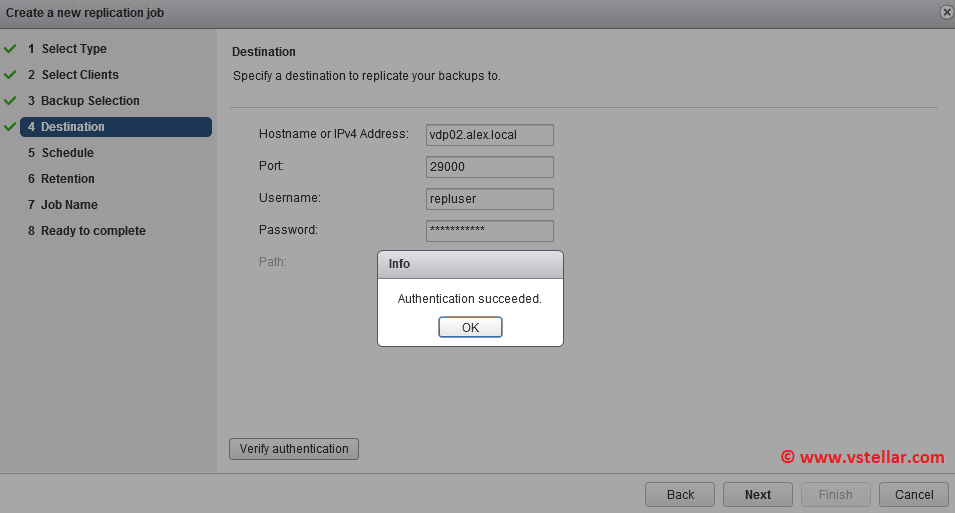
Define the schedule for how often backup should be replicated to destination and at what time replication will start. Make sure this is the time when there is no or very little backup activity going on.
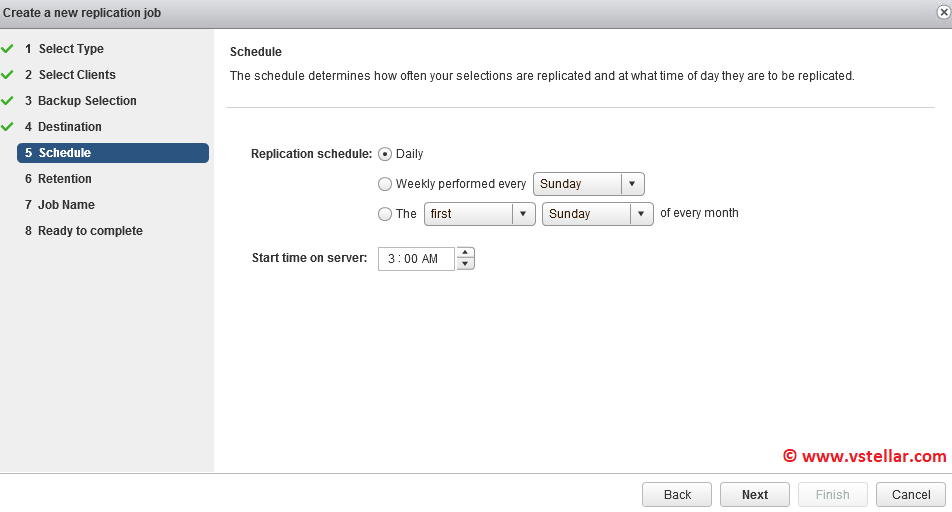
Next is to define what will be the retention period of replicated backups. You can choose to keep current expiration which is defined in source vdp or you can set a custom one.
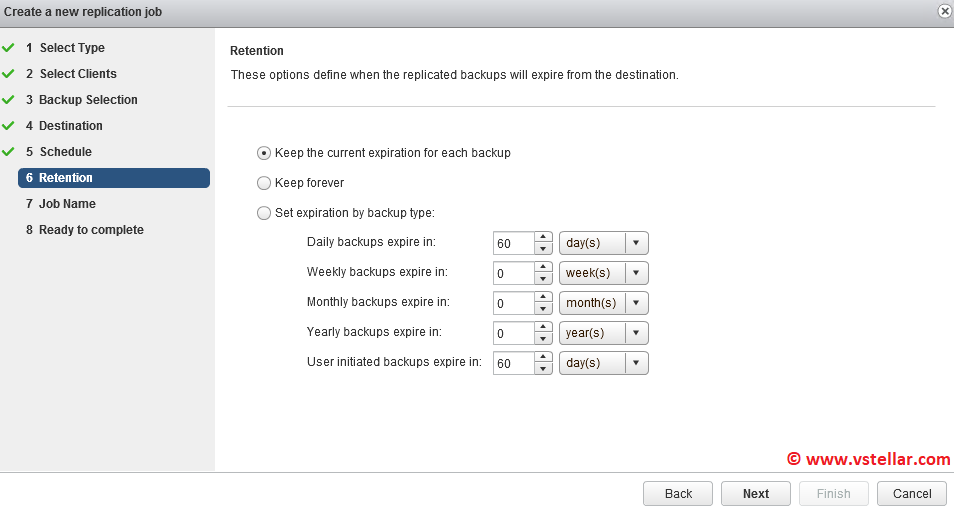
Provide a name for the replication job and hit next to continue.
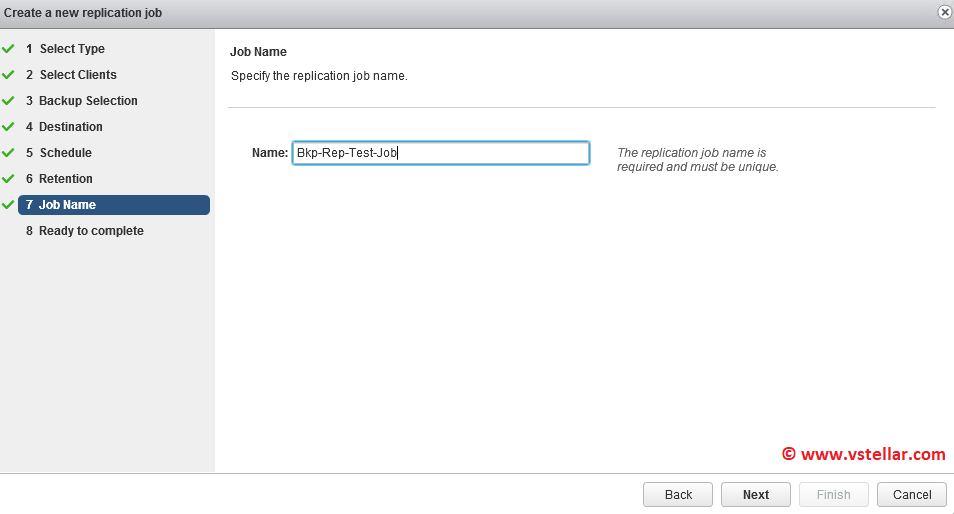
Review your settings and hit finish to complete replication job creation wizard.
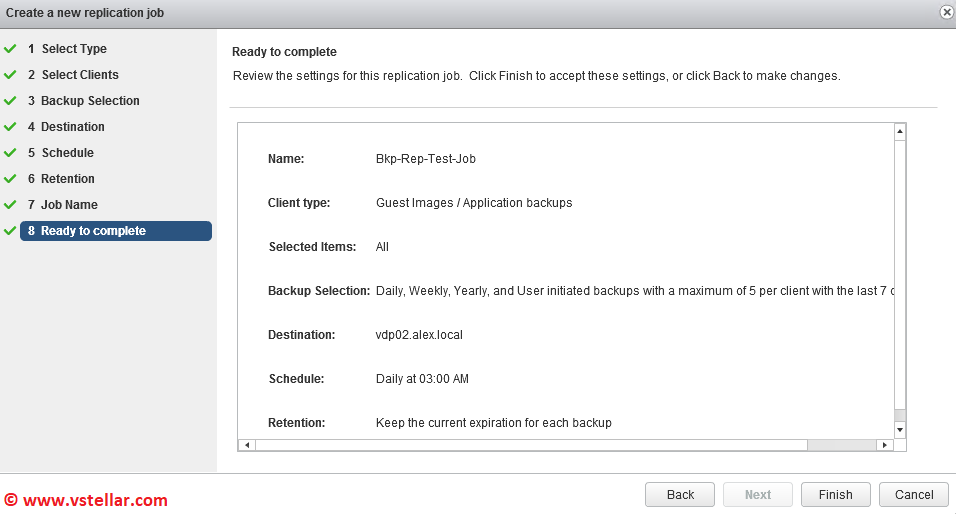
You can either wait for replication job to kick at its schedule time or can run the job right now.

You can see following tasks triggered in source and destination vCenter.

You can verify the presence of replicated backup in destination VDP under Restore tab.

And thats it for this post.
I hope you find this post informational. Feel free to share this on social media if it is worth sharing. Be sociable 🙂
